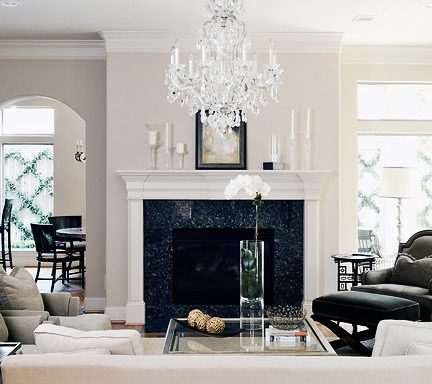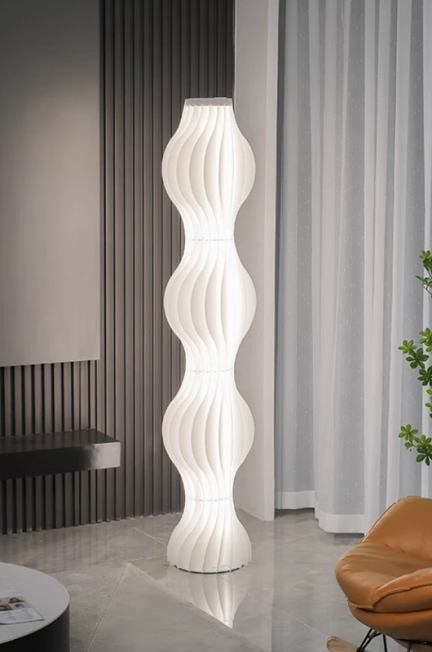Lighting plays a crucial role in any kitchen design. It not only provides the necessary illumination for cooking and food preparation but also sets the mood and enhances the overall aesthetic appeal of the space. One lamp24 lighting option that has gained popularity in recent years is pendant lights. Pendant lights are not only stylish but also functional, making them the perfect addition to any kitchen.
Pendant lights are suspended from the ceiling by a cord, chain, or rod, and they come in a variety of styles, sizes, and materials. They can be used as task lighting over kitchen islands or countertops, as well as ambient lighting to create a warm and inviting atmosphere. Pendant lights are versatile and can complement any kitchen style, from modern and minimalist to traditional and rustic.
Understanding the Different Types of Pendant Lights Available
When it comes to pendant lights, there are several different types to choose from. Mini pendants are small and compact, making them ideal for smaller kitchens or for use in multiples over a kitchen island or bar area. Multi-light pendants feature multiple light sources grouped together, creating a statement piece that adds visual interest to the space. Drum pendants have a cylindrical shape and provide a soft and diffused light that is perfect for ambient lighting.
It’s important to note that pendant lights are different from chandeliers. While both types of lighting fixtures hang from the ceiling, chandeliers typically have multiple arms or branches with light sources attached, whereas pendant lights have a single light source. Chandeliers are often used in larger spaces or rooms with higher ceilings, while pendant lights are more versatile and can be used in various areas of the kitchen.
Choosing the Right Pendant Light for Your Kitchen’s Style and Size
When choosing a pendant light for your kitchen, it’s important to consider the style and size of your space. The pendant light should complement the overall design aesthetic of your kitchen and enhance its visual appeal. For example, if you have a modern kitchen with sleek and clean lines, you may want to choose a pendant light with a minimalist design and a metallic finish. On the other hand, if you have a farmhouse-style kitchen, a pendant light with a rustic or vintage look would be more appropriate.
In terms of size, the pendant light should be proportionate to the size of your kitchen. If you have a small kitchen, a large and bulky pendant light may overwhelm the space. Conversely, if you have a large kitchen with high ceilings, a small pendant light may get lost in the vastness of the room. It’s important to strike a balance and choose a pendant light that is the right size for your kitchen.
The Benefits of Pendant Lighting in the Kitchen
Pendant lighting offers several benefits in the kitchen. Firstly, pendant lights provide focused task lighting, making it easier to see and work on countertops and kitchen islands. This is especially important when it comes to food preparation and cooking, as proper lighting can help prevent accidents and ensure that ingredients are properly measured and cooked.
Secondly, pendant lights add ambiance to the kitchen. By choosing the right type of pendant light and adjusting its brightness, you can create a warm and inviting atmosphere that is perfect for entertaining guests or enjoying a cozy meal with your family. Pendant lights can also be dimmed to create a more intimate setting during evening hours.
Lastly, pendant lights enhance the overall design of the kitchen. They serve as decorative elements that can add visual interest and become focal points in the space. Pendant lights come in various shapes, sizes, and materials, allowing you to choose one that complements your kitchen’s style and adds a touch of elegance or personality to the room.
How to Install Pendant Lights in Your Kitchen
Installing pendant lights in your kitchen is relatively straightforward, but it does require some basic electrical knowledge and skills. Here is a step-by-step guide to help you install pendant lights in your kitchen:
1. Turn off the power: Before starting any electrical work, make sure to turn off the power to the area where you will be installing the pendant lights. This can be done by flipping the corresponding circuit breaker in your electrical panel.
2. Determine the location: Decide where you want to install the pendant lights in your kitchen. Measure the distance between the ceiling and the desired height of the pendant lights.
3. Mark the location: Use a pencil or marker to mark the location on the ceiling where you will be installing the pendant lights. Make sure to mark the spots for both the electrical box and the mounting bracket.
4. Install the electrical box: Attach the electrical box to the ceiling using screws or nails. Make sure it is securely fastened and level.
5. Connect the wiring: Connect the wiring from the electrical box to the pendant light fixture according to the manufacturer’s instructions. This may involve connecting wires of similar colors together using wire nuts.
6. Mount the pendant light: Attach the mounting bracket to the electrical box using screws or bolts. Then, hang the pendant light fixture from the mounting bracket.
7. Test and adjust: Turn on the power and test the pendant lights to make sure they are working properly. Adjust their height if necessary by adjusting the length of the cord, chain, or rod.
Tips for Properly Positioning Pendant Lights for Optimal Lighting

Properly positioning pendant lights is essential for achieving optimal lighting in your kitchen. Here are some tips to help you position your pendant lights correctly:
1. Height: The height at which you hang your pendant lights will depend on their purpose and location in your kitchen. For task lighting over a kitchen island or countertop, hang pendant lights approximately 30-36 inches above the surface. For ambient lighting, hang pendant lights higher, around 60-72 inches above the floor.
2. Spacing: When installing multiple pendant lights, it’s important to space them evenly to ensure balanced lighting. As a general rule, space pendant lights approximately 24-30 inches apart. However, this can vary depending on the size of your kitchen and the size of the pendant lights.
3. Balance: Consider the overall balance and symmetry of your kitchen when positioning pendant lights. If you have a long kitchen island, for example, you may want to install multiple pendant lights evenly spaced along its length. If you have a smaller kitchen, a single pendant light may be sufficient.
4. Adjustability: Opt for pendant lights that are adjustable in terms of height and direction. This will allow you to customize the lighting according to your needs and preferences. Pendant lights with adjustable cords, chains, or rods are particularly useful in this regard.
Creative Ways to Use Pendant Lights to Enhance Your Kitchen’s Design
Pendant lights offer endless possibilities when it comes to enhancing the design of your kitchen. Here are some creative ideas for using pendant lights:
1. Focal point: Use a statement pendant light as a focal point in your kitchen. Choose a bold and eye-catching design that stands out and becomes the centerpiece of the room.
2. Clustered arrangement: Instead of installing a single pendant light, consider clustering multiple pendant lights together for a unique and visually striking look. This works particularly well over a kitchen island or dining table.
3. Highlight specific areas: Use pendant lights to highlight specific areas or features in your kitchen, such as a breakfast bar or a decorative backsplash. By directing the light towards these areas, you can draw attention to them and create visual interest.
4. Mix and match: Don’t be afraid to mix and match different styles, sizes, and materials of pendant lights in your kitchen. This can create a dynamic and eclectic look that adds personality and charm to the space.
Maintenance and Cleaning Tips for Pendant Lights
Proper maintenance and cleaning are essential to keep your pendant lights looking their best. Here are some tips to help you maintain and clean your pendant lights:
1. Regular dusting: Dust your pendant lights regularly using a soft cloth or duster. This will help prevent dust buildup and keep the lights shining brightly.
2. Cleaning glass shades: If your pendant lights have glass shades, clean them with a mixture of warm water and mild dish soap. Gently wipe the shades with a soft cloth or sponge, then rinse with clean water and dry thoroughly.
3. Cleaning metal fixtures: For pendant lights with metal fixtures, use a metal cleaner or polish to remove any tarnish or fingerprints. Follow the manufacturer’s instructions for best results.
4. Changing light bulbs: When changing light bulbs in your pendant lights, make sure to turn off the power and allow the bulbs to cool down before handling them. Use a clean cloth or gloves to avoid leaving fingerprints on the bulbs.
Energy Efficiency and Cost Savings with LED Pendant Lights
LED pendant lights offer several benefits when it comes to energy efficiency and cost savings. LED lights are more energy-efficient than traditional incandescent or fluorescent bulbs, consuming less electricity while providing the same amount of light. This can result in significant cost savings on your energy bills over time.
LED lights also have a longer lifespan compared to other types of bulbs, which means you won’t have to replace them as often. This not only saves you money on replacement bulbs but also reduces waste and is more environmentally friendly.
When choosing LED pendant lights for your kitchen, look for ones that are ENERGY STAR certified. These lights meet strict energy efficiency guidelines set by the U.S. Environmental Protection Agency (EPA) and can help you save even more on your energy bills.
Transform Your Kitchen with the Beauty and Functionality of Pendant Lights
Pendant lights are the perfect addition to any kitchen, offering both style and functionality. They provide focused task lighting, add ambiance, and enhance the overall design of the space. With a wide variety of styles, sizes, and materials to choose from, you can easily find pendant lights that complement your kitchen’s style and size.
By following the installation and positioning tips provided in this article, you can ensure that your pendant lights are properly installed and positioned for optimal lighting. Regular maintenance and cleaning will keep your pendant lights looking their best and prolong their lifespan.
Consider upgrading to LED pendant lights for even greater energy efficiency and cost savings. LED lights not only consume less electricity but also have a longer lifespan, reducing the need for frequent bulb replacements.
Transform your kitchen with the beauty and functionality of pendant lights. Whether you choose a single pendant light or a cluster of lights, they are sure to make a statement and enhance your kitchen’s design.



